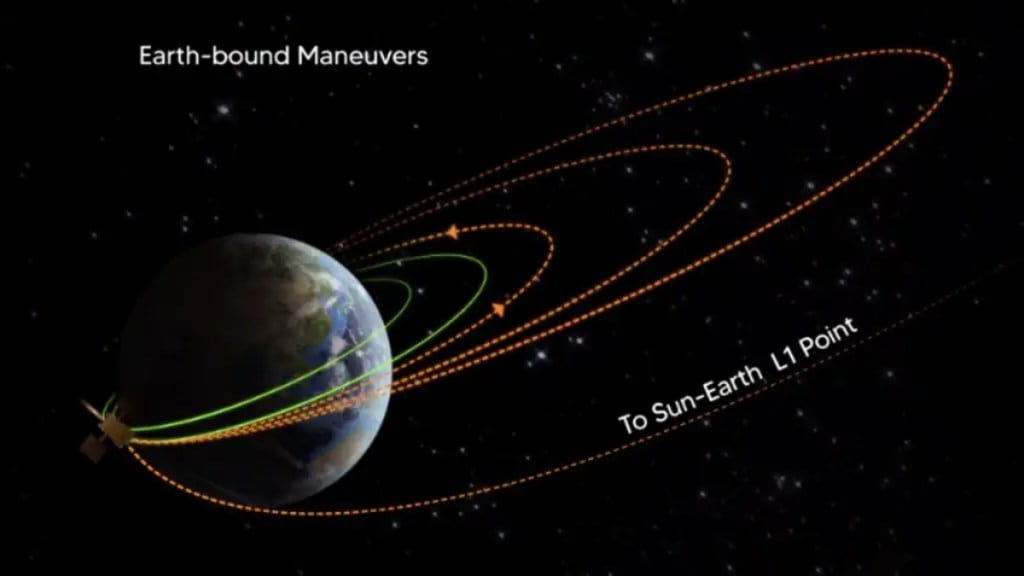After the resounding success of India’s Chandrayaan-3 mission, all eyes are on ISRO’s Aditya L1 mission. This is India’s first space based mission to study the Sun.
The Indian space agency on Monday informed that Aditya L1 mission spacecraft has started collecting data which will assist the scientists in analysing the behaviour of particles that surround Earth. ISRO said that the sensors of an Aditya L1 instrument has started measuring supra-thermal and energetic ions and electrons at distances greater than 50,000 km from Earth.
Aditya L1 spacecraft needs Trajectory Correction Manoeuvre
The Aditya L1 spacecraft was put into a trajectory to reach the Sun-Earth Lagrangian (L1) point Tuesday. However, scientists have said that the spacecraft could require a Trajectory Correction Manoeuvre (TCM) soon due to the anomalies that may have crept into the early trajectory, The Indian Express reported.
Almost two days Trans-Lagrangian Point 1 Insertion (TL1I) manoeuvre was carried out on September 19 the scientists at ISRO were waiting for data at ground stations on Thursday to see the trajectory they had managed to achieve and estimate the timing and amount of trajectory correction that will be required.
U R Rao Satellite Centre Director M Sankaran has said that the correction manoeuvre will be done. “We have to decide when it will be done after the assessment of information after 48 hours,” he added.
What are trajectory correction manoeuvres?
Trajectory correction maneuvers, often referred to as trim manoeuvres, are often employed in deep space missions. These critical manoeuvres are vital in adjusting the flight path of spacecraft following their initial trajectory insertion. The adjustment is required to ensure the spacecraft follows a precise course towards its intended destination, such as the L1 point, located 1.5 million kilometers on the journey to the Sun.
The Aditya L1 will be injected into an orbit around L1 after about 110 days. In order to get this right, the spacecraft needs to travel to stay on the planned trajectory.
Anomalies in Aditya L1 mission
The Indian Express in its report said that there were some anomalies in the data for orbit determination and the alignment of ground station antennas. This led to a trajectory correction manoeuvre anticipated in the upcoming days for the Aditya L1 mission.
Earlier, ISRO said that the spacecraft’s Trans-Lagrangian Point 1 Insertion (TL1I) manoeuvre was carried out successfully and it was on a trajectory that would take it to the Sun-Earth L1 point. It was the fifth consecutive time ISRO has successfully transferred an object on a trajectory toward another celestial body or location in space.
However, scientists found that there could be some trajectory errors which will require correction. Sources have said that the anomalies seen in the orientation of antennas at ground stations in India and the absence of support from Nasa’s Jet Propulsion Laboratory’s ground stations could have caused errors in orbit-raising manoeuvres by Aditya L1 spacecraft.

